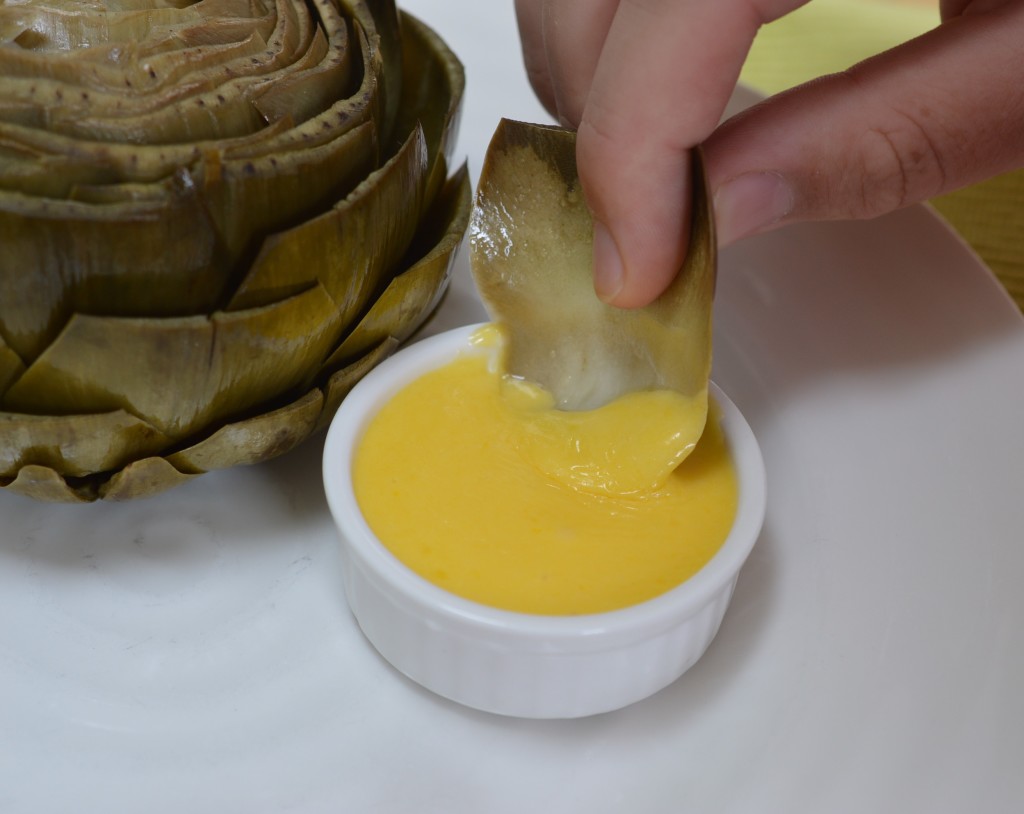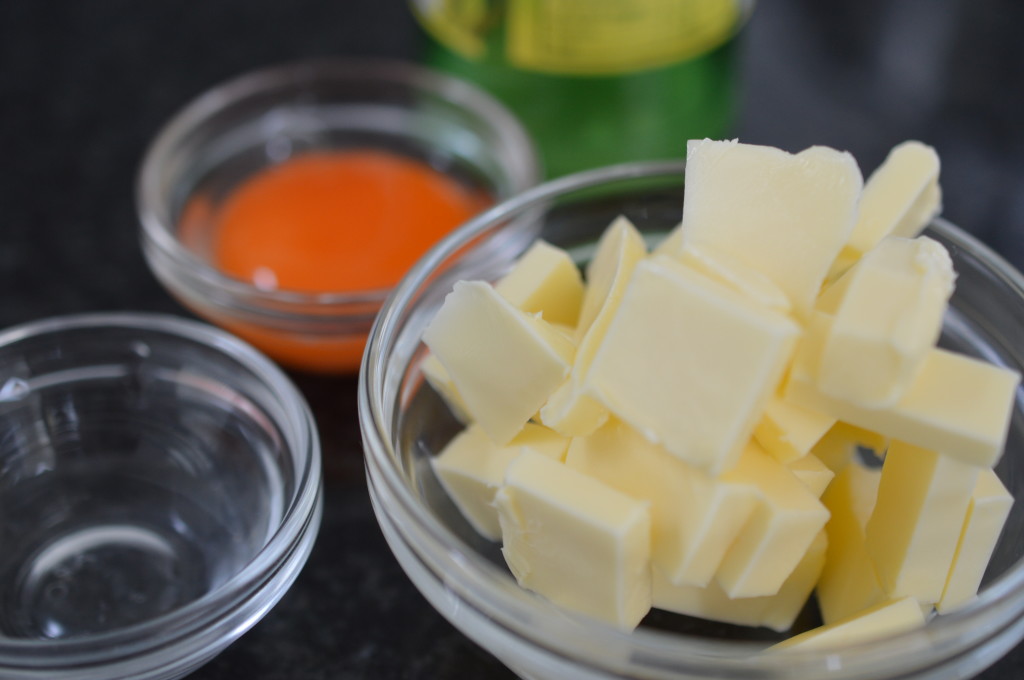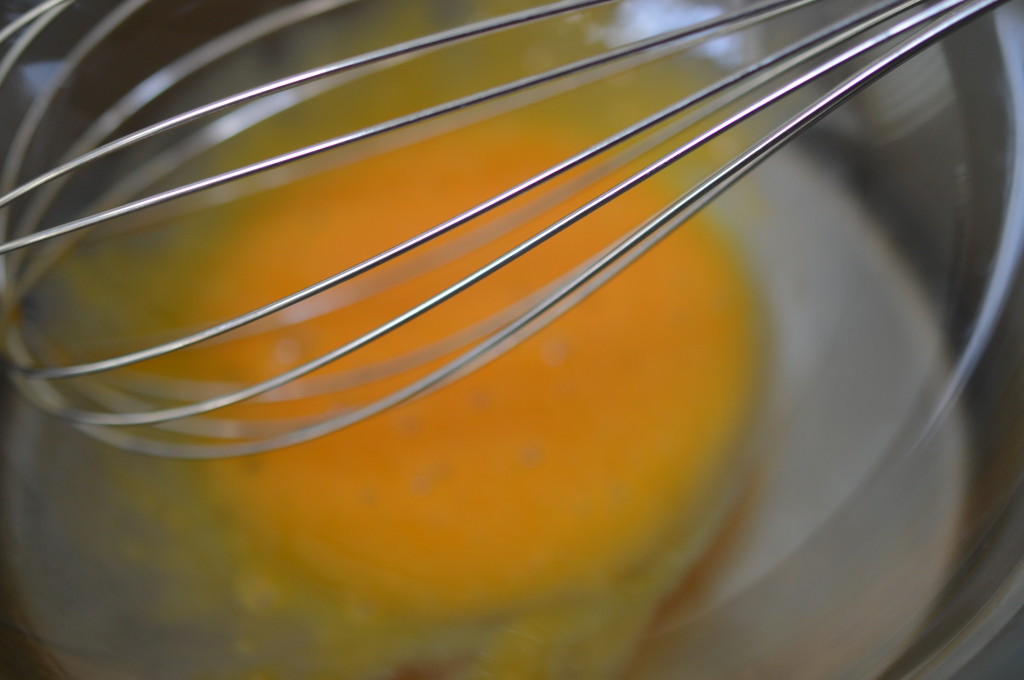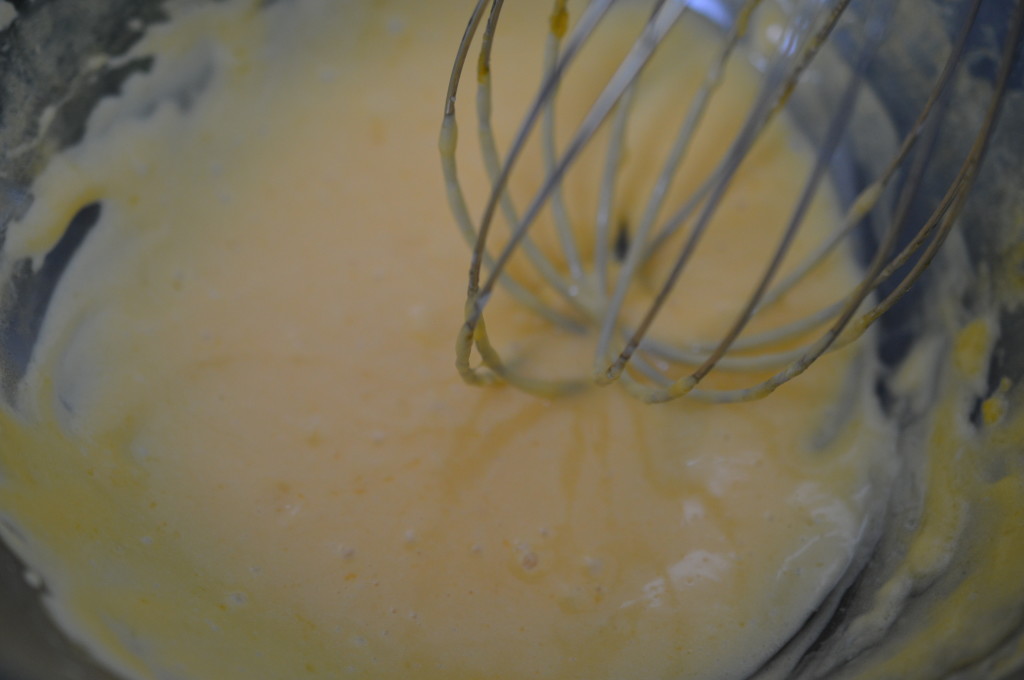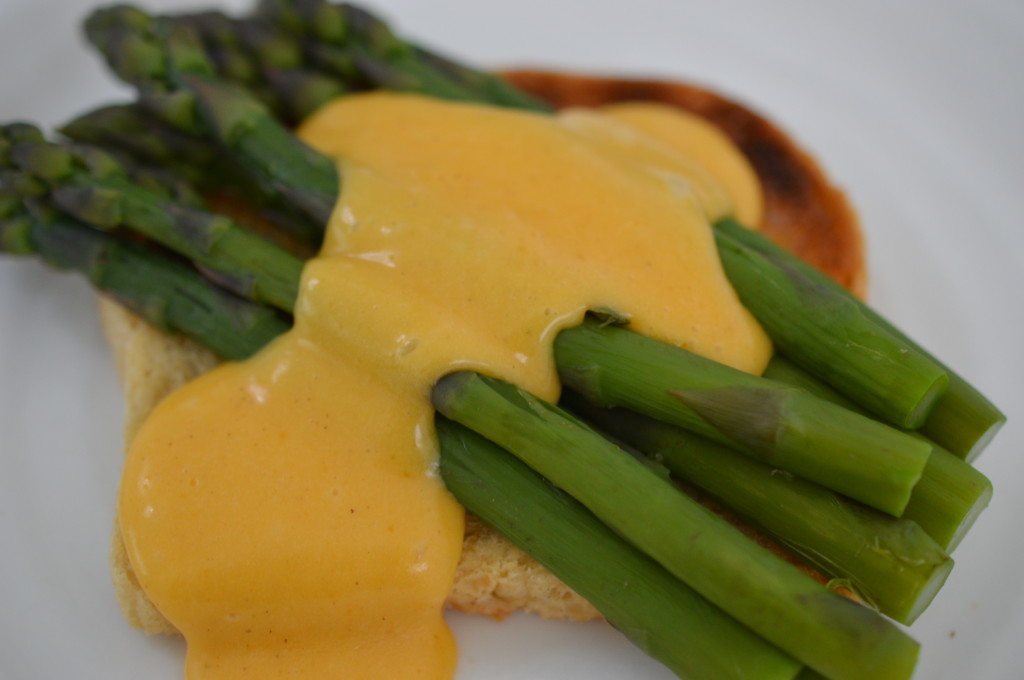Hollandaise Sauce
No-one needs Hollandaise, but wouldn’t life be a poorer thing without it?
It’s one of the five ‘mother’ sauces in French Haute Cuisine and I suspect that’s why it’s got the reputation as ‘difficult’ – but if you resolutely refuse to be star-struck, it really isn’t a diva to make. Just do it. You’ll never look back. And, even if the worst happens, if you make it in a small quantity the ingredient investment is tiny. Time-wise it’s less than ten minutes. Then go again. In the privacy of your own kitchen, who’s watching???
I just love it. It’s perfect with Globe Artichokes, steamed asparagus, poached salmon, Eggs Benedict …
I didn’t even have to think about that.
There is no disguising how much butter goes in.
Oh well!
You’ll see from the photo I’ve already made a ‘choice’. I don’t clarify my butter. I use a good quality butter – one I like the taste of. Unsalted or salted doesn’t really matter. If you use unsalted you’ll need to add a pinch of salt at the end – and with salted you probably won’t need to.
Nor do I do the super-classical vinegar reduction thing. The reason you’d do it is to raise the temperature at which your egg will curdle. It’s a PH thing. By using a ‘bowl over water’ method I’m using a very gentle heat and I find I’m in total control. I can honestly say I don’t give the PH content a thought.
For such a simple little sauce there are a surprising number of methods to choose from. Foodies generally agree the ‘blender method’ lacks flavour when ‘tasted alongside a classically made Hollandaise’. But, who does that ‘tasting alongside’ thing? The blender method is marginally quicker in that you blitz the egg yolk and trickle in melted butter but I don’t do it. The reason has nothing to do with taste but because I hate washing the blasted blender up. Besides which, I’ve been making Hollandaise longer than I’ve owned a blender. Plus, with the bowl method, it’s easier to make in smaller quantities – and, since it’s a sauce you need to make in the quantity you want to use it, that’s useful.
More recently, I’ve also tried and rejected the ‘direct saucepan’ method because I ended up with a thin eggy mess – twice. I haven’t decided whether that’s because my saucepan lacks ‘bottom’ or whether a ‘Simmering Plate’ is too fierce. I could use the hob and go and buy a diffuser .. but, I’m not going to.
Much though I hate unnecessary washing up, I really can’t see there’s much to worry about using a pyrex bowl over a saucepan of barely simmering water. The bowl goes in the dishwasher and the saucepan gets a quick wipe and it’s back in the drawer. It’s a method which is entirely more forgiving and I don’t want the stress.
Purists will say you need to use a stainless steel bowl – but I prefer to see what’s happening to my water below my sauce. You want scarcely a bubble. Make sure the water won’t come into contact with the bottom of the bowl.
Take your butter from the fridge. For every egg yolk you need 55g/2oz butter. Cut into cubes.
I’m making a super-small amount here. Just enough for two of us. One egg yolk. In a bowl set above – but not touching – a saucepan of barely simmering water. Stainless or otherwise. Together with 1 teaspoon-ish of cold tap water.
Give it a whisk. The only thing you have to know is ‘keep everything moving’. You’re making an emulsified sauce.
And then drop in the first cube of butter. When it’s been incorporated, drop in the second.
And keep going. Keep everything moving. I use a figure of eight movement with my whisk.
And the final cube of butter.
Then a splash of lemon juice. About ½ tsp for each egg yolk, but if you prefer your Hollandaise a little more lemony you can add a little more.
Transfer to a bowl. Season to taste. Salt, maybe. I rarely do as I use salted butter. White pepper will mean you don’t have any black flecks. If you’d like it a little thinner, then add a tablespoon of hot water.
And that’s it.
If it all goes horribly wrong (and that might matter if you are making a larger quantity), there are some things you can do. At the first hint of curdling add a splash of hot water and then slow down the rate at which you are adding the butter. If your disaster is more extreme you’ll need to strain your sauce. Keep what’s left warm and begin again in a clean bowl. You can then whisk in the strained sauce. Of course, you’ll have more Hollandaise but what a lovely problem to have.
It won’t re-heat. If you need to ‘hold’ your Hollandaise while you pull anything else together or wait for friends to arrive/get up the best way is to pour it into a warmed flask. Two hours max. It works like a dream. You could also hold it in the bain marie – that’s the bowl above warm water. You want a holding temperature of 145°F/63°C. (Use the flask!)
Start the diet tomorrow. Eat.
Serves 2 – 1 egg yolk – can easily be multiplied.
- 1 free-range, organic egg yolk – as fresh as you can get it
- a splash of cold water, about 1 tsp
- 55g/2oz good quality butter, fridge-cold and diced
- a splash of lemon juice, about ½ tsp but to taste
- Season, to taste
Set a clean bowl above an 2.5cm/1″ of barely simmering water. It’s important water doesn’t come into direct contact with the bottom of the bowl.
Place 1 egg yolk in the bowl, together with a splash of cold water and whisk together.
Add a cube of cold butter. Whisk continuously. In order to emulsify everything you need to keep it all moving. As soon as your cube of butter has been incorporated, add the next. And the next.
Before your eyes your sauce will thicken.
When all the butter has been incorporated, add a splash of lemon juice. Season to taste.
Eat.
